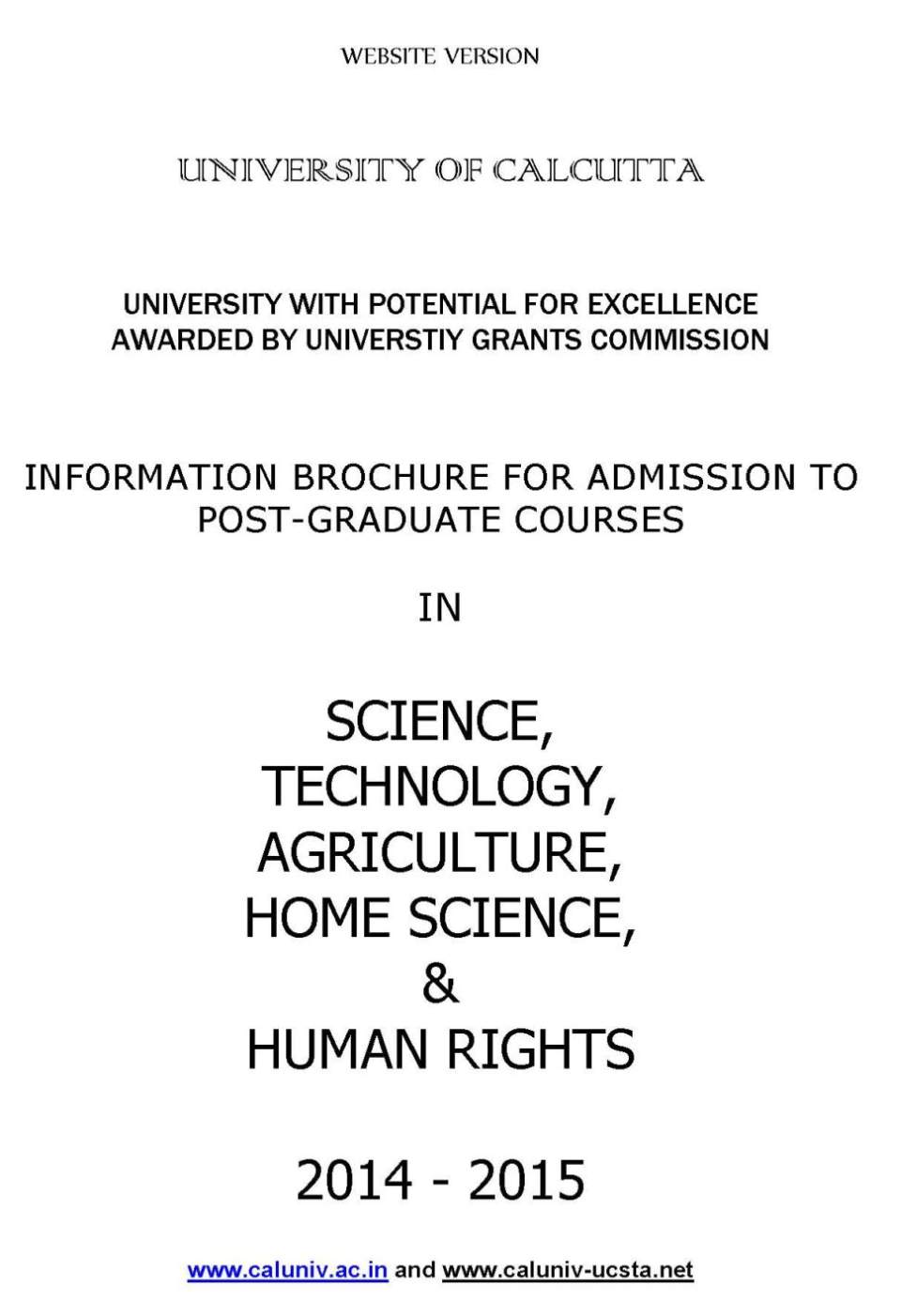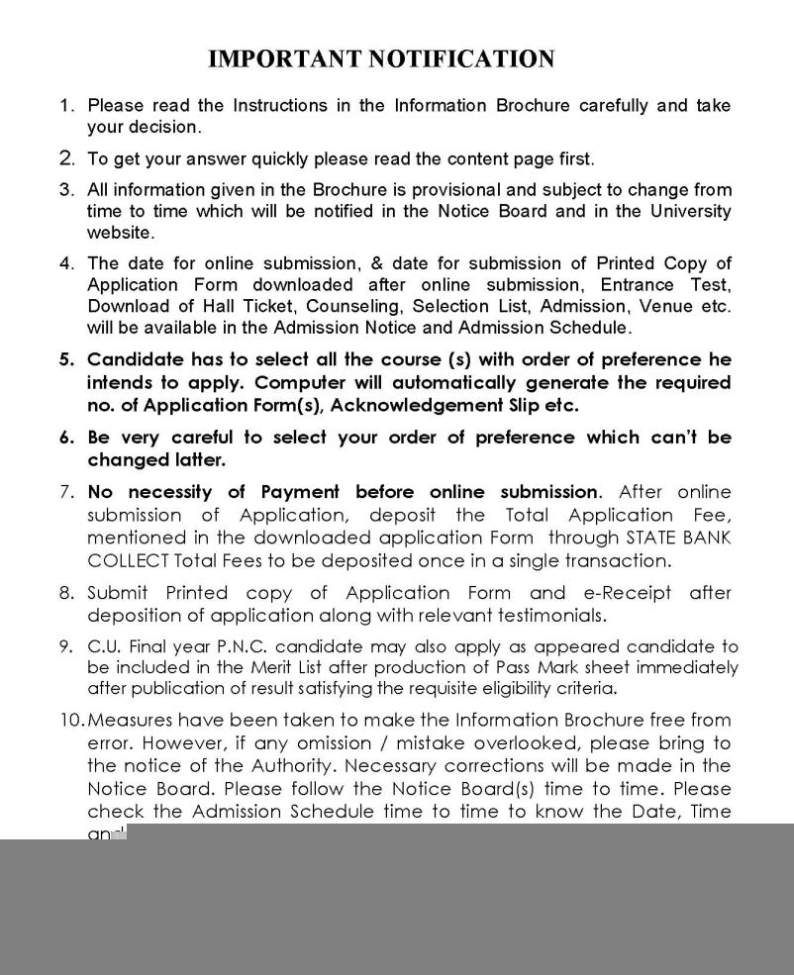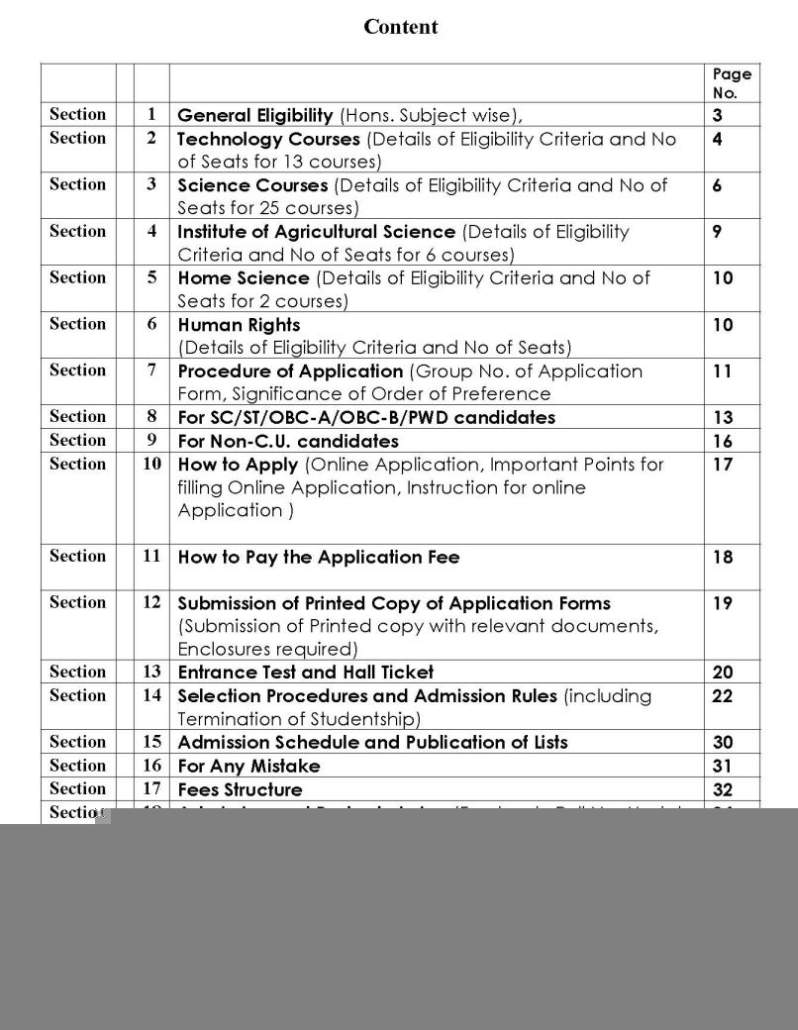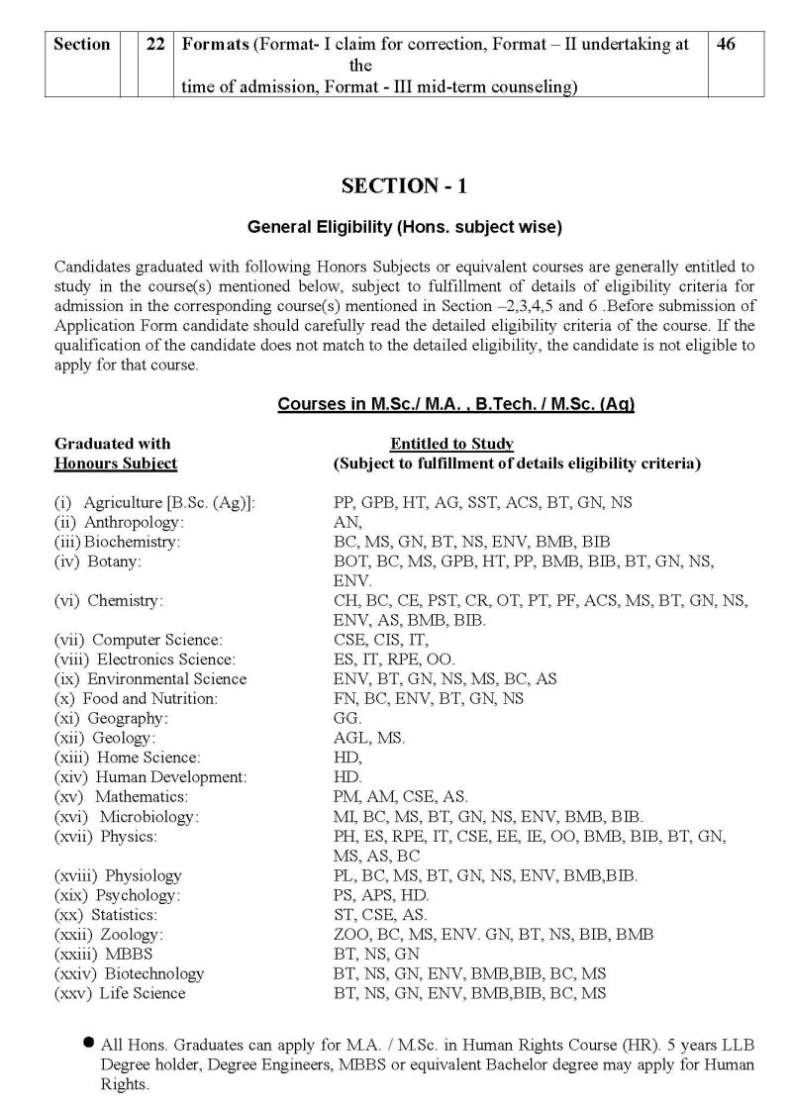| Re: Required Percentage for Calcutta University M. Sc in Zoology
The University of Calcutta is a public state university located in Kolkata, West Bengal, India. It was established on 24 January 1857.
M. Sc in Zoology admission-
There is no particular minimum Percentage required for M.Sc Zoology. Selection is based on the merit list of qualifying exam.
Eligibility-
B.Sc Hons in Zoology
Selection process-
In order of merit in B.Sc Hons
Duration - 2 years.
Tuition fee per month - Rs 100 per month
Intake – 71
UC M. Sc in Zoology
Part 1 Paper-I
Unit-1 ZHT 01. Animal diversity I: Non-chordate 50
Unit-II ZHT 02. Cell Biology & Genetics 50
Paper-II
Unit- I ZHT 03. Animal Physiology & Biochemistry 50
Unit-II ZHP 04. Laboratory course I [Gr. A=25 + Gr. B =25) 50
200
Part II Paper -III
Unit I ZHT 05. Animal diversity II. Chordate 50
Unit-II ZHT 06. Histology, Endocrinology &
Reproductive Biology 50
Paper -IV
Unit-I ZHT 07. Developmental Biology 50
Unit-II ZHP 08. Laboratory course II [Gr. A=25 + Gr. B=25] 50
200
Part III Paper -V
Unit-I. ZHT –09. Microbiology, Parasitology & Immunology 50
Unit- II ZHT –10. Molecular Biology and Biotechnology 50
Paper-VI
Unit- I ZHT -11. Evolution, Systematics & Animal behavior 50
Unit-II ZHT -12. Ecology and Environmental Biology 50
Paper -VII
Unit I ZHT -13. Applied Zoology and Biostatistics 50
Unit-II ZHP -14. Laboratory course-III 50
Paper-VIII
Unit-I ZHP -15. Laboratory Course- IV 50
Unit-II ZHP -16. Laboratory Course -V 50
400
Total 800
3
Detailed Syllabus
Part –1
Theory –150 and Practical –50
Paper I
Unit- 1. ZHT 01 Animal diversity I : Nonchordate Full Marks 50
(Lectures 60)
1. Distinguishing characters & classification of Protozoa (up to Phyla) [Levine et al,
1980]
Special Features a) Morphology: Paramoecium sp.
b) Movement: i)Amoeboid movement in Amoeba, ii)Ciliary movement of
Paramoecium sp and iii) flagellar movement in Euglena, c) Reproduction:
Paramoecium sp. with special reference to conjugation
2 Distinguishing characters and classification of Phylum Porifera up to class
Special feature : Canal system in Porifera and its evolutionary significance
3 Distinguishing characters and classification of Phylum Cnidaria up to class
Special feature : i) Polymorphism in Siphonophores, ii) Coral reefs (types, theories
on coral reef formation, distribution with reference to India and conservation)
4. Symmetry and Coelom- types with examples
5. Distinguishing characters and classification of Phylum Platyhelminthes up to class
6. Form and function and classification of Phyla Aschelminthes and Nematoda
7. Distinguishing characters and classification of Phylum Annelida up to class
8. Metamerism in Annelida
9. Distinguishing characters and classification of Phylum Arthropoda up to class
Special feature: Respiration in Arthropoda (a)Terrestrial : Periplanata, scorpion,
spider, b) Aquatic : Prawn, Kingcrab): Organ structures and mechanism
10. Distinguishing characters and classification of Phylum Mollusca up to class
Special feature: Nervous system: Nervous system in gastropods and cephalopods
(Types structures, organs and mechanism)
11. Distinguishing characters and classification of Phylum Echinodermata up to class
Special feature: a) Water vascular system of Asterias sp., b) Echinoderm larvae
12. Anatomical peculiarities of (a) Limulus (b) Balanoglossus and their phylogenetic
position.
N.B. Classification scheme other than Protozoa as per Ruppert and Barnes (1994)
6th Ed., Invertebrate Zoology.
Unit- II. ZHT 02. Cell Biology and Genetics Full Marks 50
(Lectures- 60)
4
Group- A: Cell Biology 20
1. Microscopy: Principles of optical, Phase Contrast, and Electron microscopes
2. Cellular organelles and operating system for cells: Ultrastructure and functions
of Plasma membrane, Mitochondria, Golgi apparatus and its network, ribosome,
Endoplasmic reticulum and Lysosome.
3. Nucleic acids: Physio-chemical properties, structures types and functions of
DNA and RNA
Group- B Genetics 30
4. Chromosome structure: nucleosomal organization, telomere, centromere,
kinetochore, B chromosome, polytene chromosome, lampbrush
chromosome.
5. Replication, transcription and translation in prokaryotes and eukaryotes.
6. C-value paradox, Genome concept and its organization,
7. Allele: a) types, b) multiple allele, (ABO blood group only)
6. Linkage and recombination, Holliday model, gene mapping in diploid (by three
point crosses).
8. Sex determination and dosage compensation in Drosophila and man.
9. Genetic variation : Mutation types with example, chromosomal aberrations in
number and structure, chromosomal basis of genetic disorder and diseases,-
Down, Patau, Turner’s and Klinefilter syndromes; induction of mutation by a)
ionizing radiation and b) Chemical mutagens only.
Paper –II
Unit-I. ZHT 03. Animal Physiology & Biochemistry (Full marks 50)
(Lecture-60)
1. a) Elementary idea of structure of carbohydrate, protein and lipid.
b) Process of Glycolysis, Glycogenesis, glycogenolysis, gluconeogenesis
2. Elementary idea of biological oxidation, oxidative phosphorylation and electron
transport chain
3 B oxidation of fatty acids,
4. Protein metabolism with special reference to Deamination and Transamination.
5. Enzymes: (a) Classification b) Kinetics: Michelis-Menten concept, c) Factors
affecting enzymetic actions
6. Structure & function of haemoglobin, transport of O2 and CO2 in mammals, Bohr
and Haldane effect, Chloride shift.
7. Structure of mammalian nephron, physiology of urine formation, osmoregulators
and osmoconformers
4. Physiology of excretion a) urea cycle, Nitrogenous wastes- Amonia, urea,
uric acid, creatinine.
8. Propagation of nerve impulse through nerve fibres, synaptic and neuro-mascular
5
junctions (origin, nature and mechanism).
9. Temperature regulation in human
10. Physiology of vision in mammals
11. Physiology of hearing in mammals
Unit- II. ZHP 04. Laboratory courses Full Marks- 50
Group-A 25
1. Major dissections 15x 1 =15
a) Cockroach : i) Salivary apparatus (with Hypopharynx), ii) Nervous system and
iii) Male reproductive system
b) Pila sp : i) Digestive and ii) Nervous system
2. Minor dissections 5x1=5
(a) Digestive system of cockroach
b) Female reproductive system of cockroach
c) Mouth parts of cockroach
d) Radula of Pila sp.
e) Osphradium of Pila sp.
3. Laboratory note book - 2
4. Viva voce - 3
Group-B. 25
1. Study of meiosis from grasshopper (staining and identifications of different stages
of meiotic division). 10
2. Colorimetric estimation (Lowry’s method) of protein 5
3. Test of ammonia, uric acid and urea from test sample (Qualitative) 5
4. Laboratory note book 2
5. Viva voce 3
Contact details
University Of Calcutta
Senate House, 87/1, College Street, Kolkata, West Bengal 700073
033 2241 0071
Map location
[MAP]https://maps.google.co.in/maps?q=Calcutta+University&hl=en&ll=22.576351,88.3 64196&spn=0.006538,0.009892&sll=41.547805,-87.690339&sspn=0.010599,0.019784&t=m&z=16&iwloc=A[/MAP]
For more details about this course here is the attachment'
|



